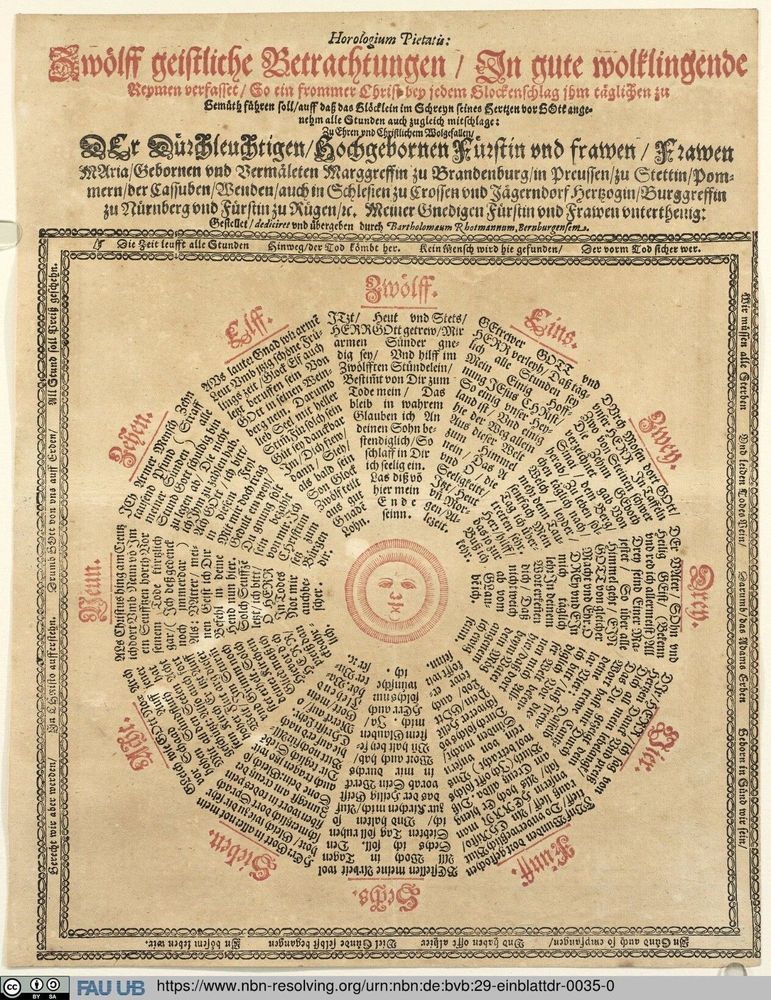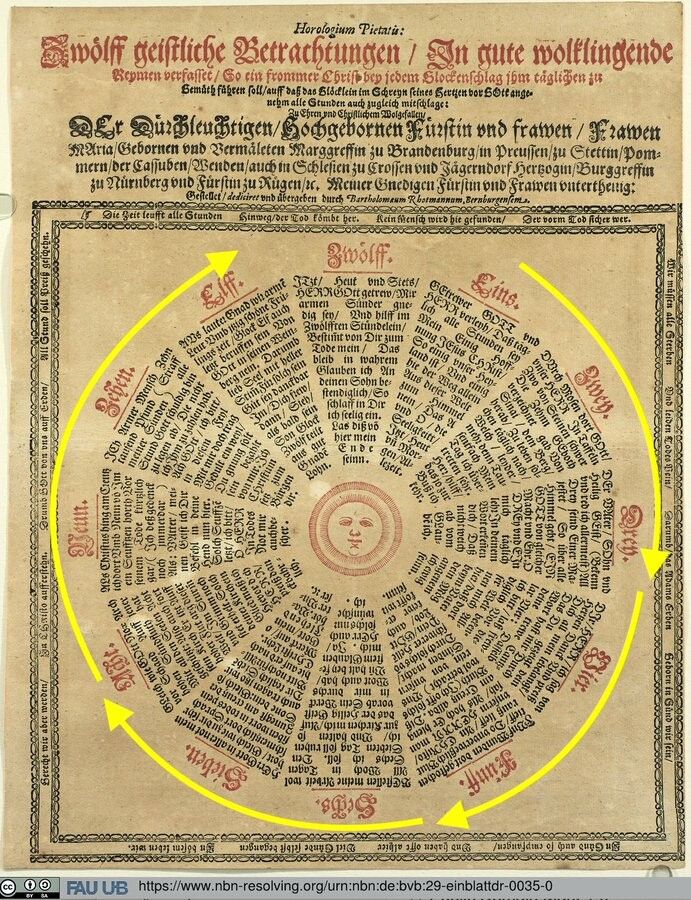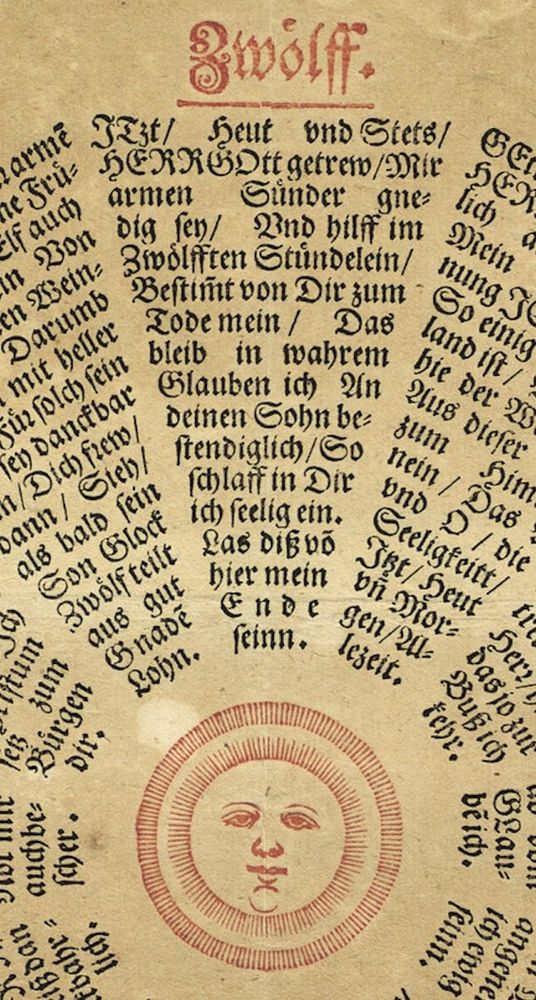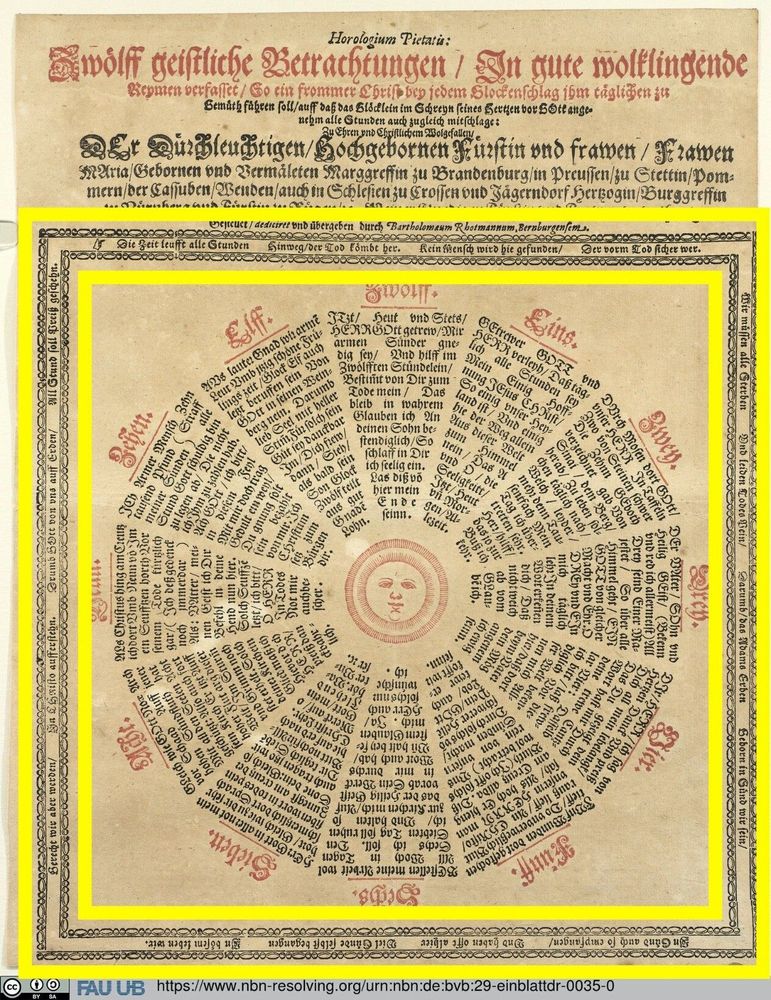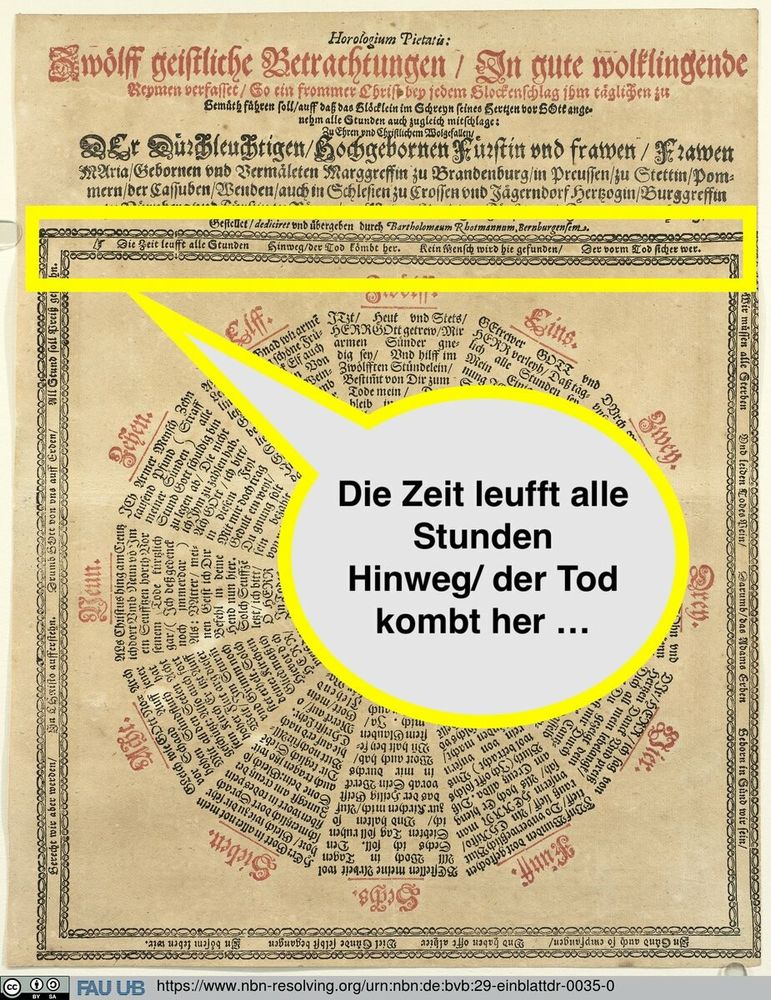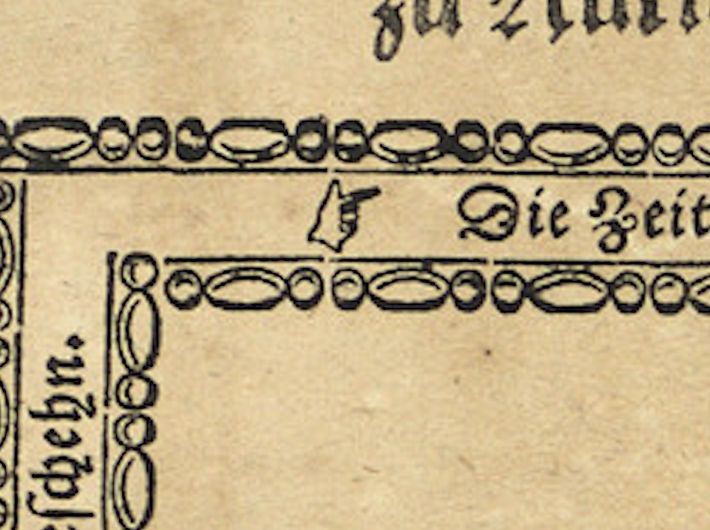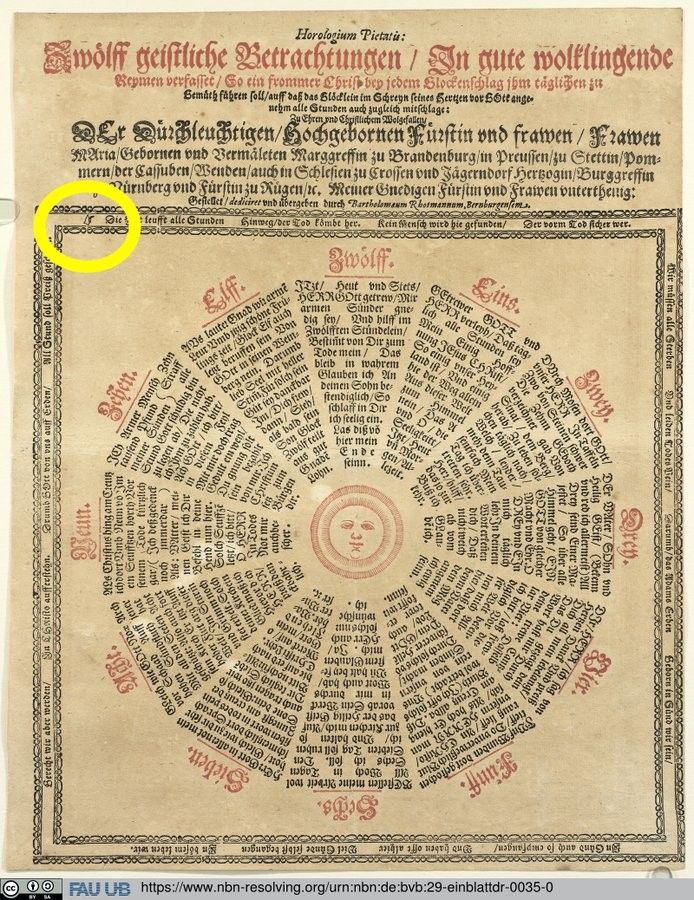- A timepiece of seventeenth-century Germany. A single-sheet item printed in red and black. A broadside ("Horologium Pietatis: Zwölff geistliche Betrachtungen...") drawing on the clock’s ubiquitous presence in early modern culture. Have a closer look at this 🧵 dear #skystorians 1/
- What makes this print special is not the fact that we know almost nothing about its creator (Bartholomaeus Rhotmann). What makes this print special is the allegory of a clock running from 1 to 12 interpreted in 12 printed textual units. #earlymodern #BookHistory folks, have a look at the units 2/
- So why are these 12 printed textual units so special? They are units in the allegory of a clock running from 1 to 12. In doing so the broadside draws on the contemporary imagination and knowledge about the range of metaphors deploying clockwork. 3/
- In this case, the timepieces are spiritual orders and reminders: praise the Lord every hour of the day. Hi, well known Liturgy of the Hours. Nice seeing you around. 4/
- #bookhistory nerds, nota bene: the framing texts of the timepiece are in relation to the hours (and prayers) of the faithful inside. The printer surely had fun framing the texts... 5/May 7, 2025 14:43
- You may ask for the framed message? Well, it is a reminder: Time is running, your death is near ... and so on. These are reminders framing the 12 prayers. A true 24/7 reminder to be faithful, all the time, always. Behave observer of this #broadside. That's a pure religious messaging. 6/
- Fun fact: a printed #manicule starting the framing texts. I hope you enjoyed this, #BookHistory folks. Goodbye. And thanks for your attention and sharing, and commenting. 7/7
